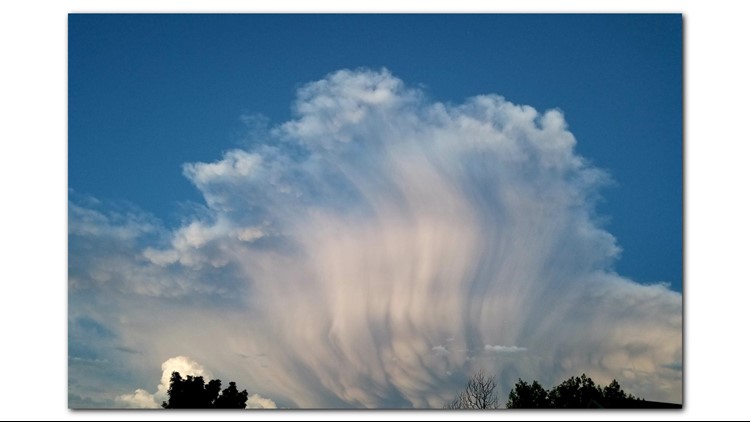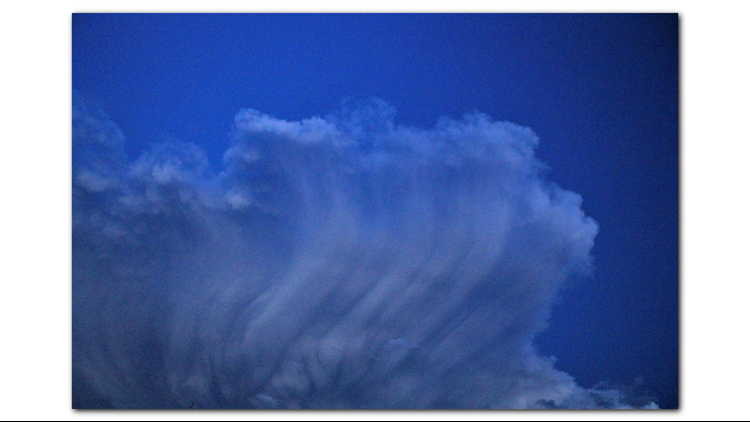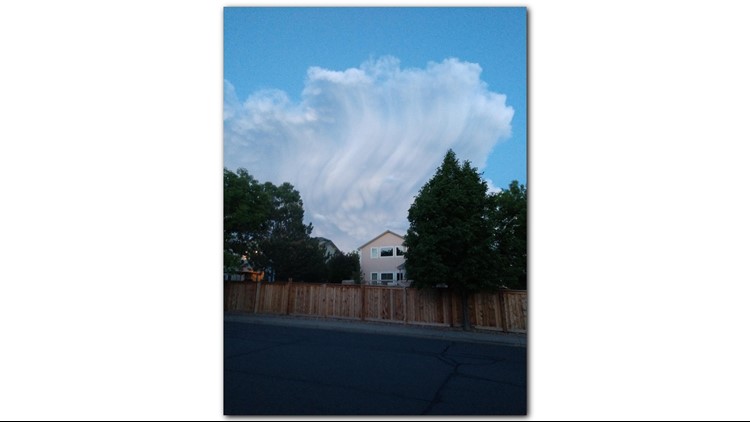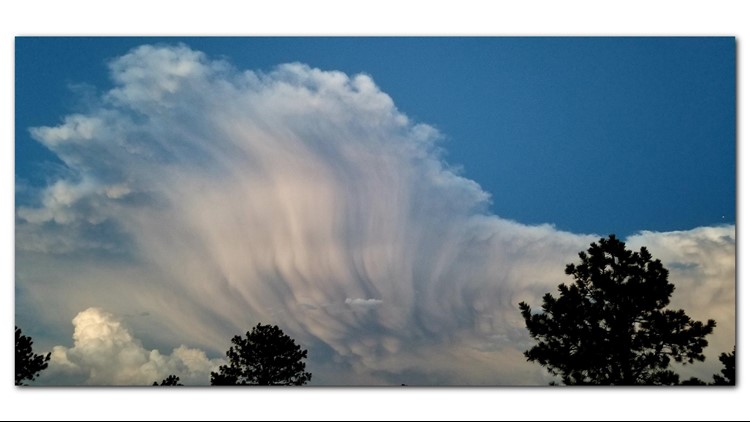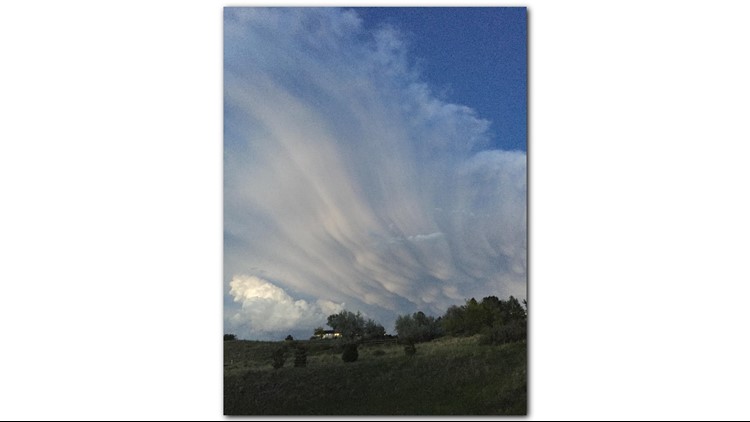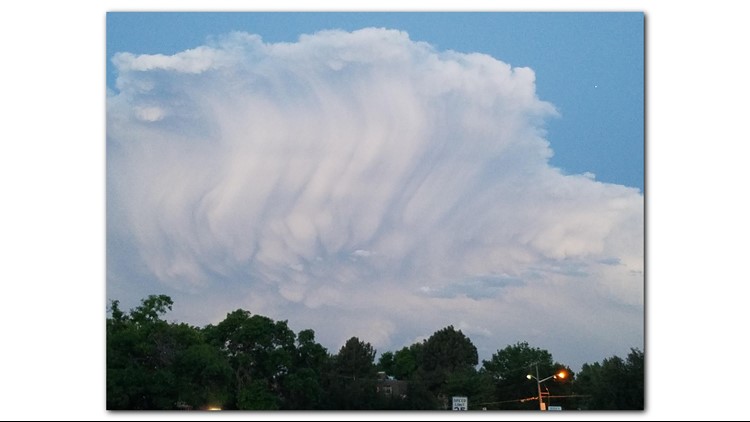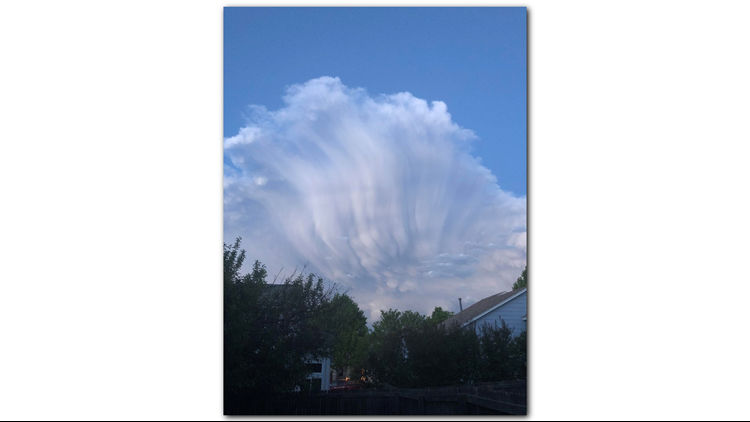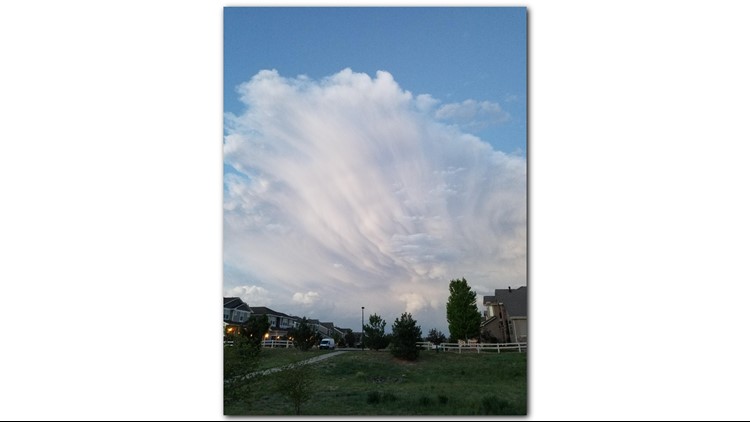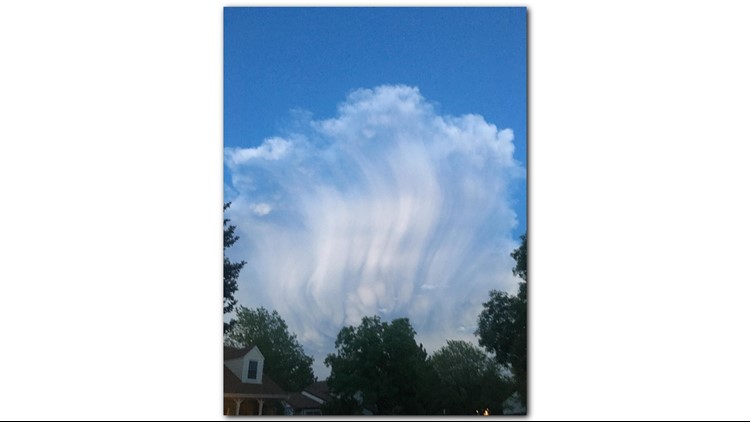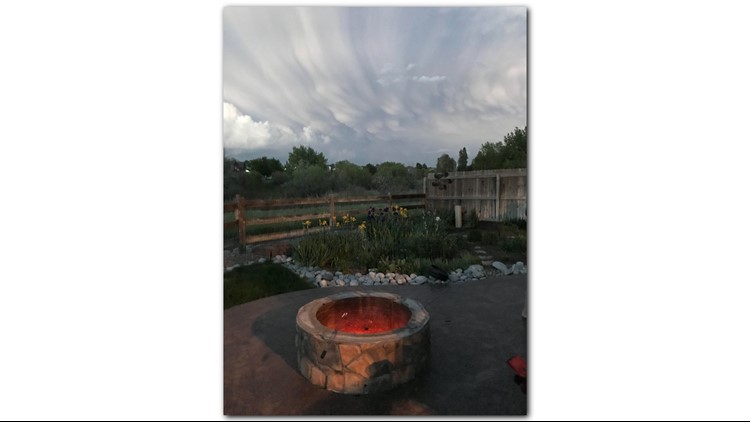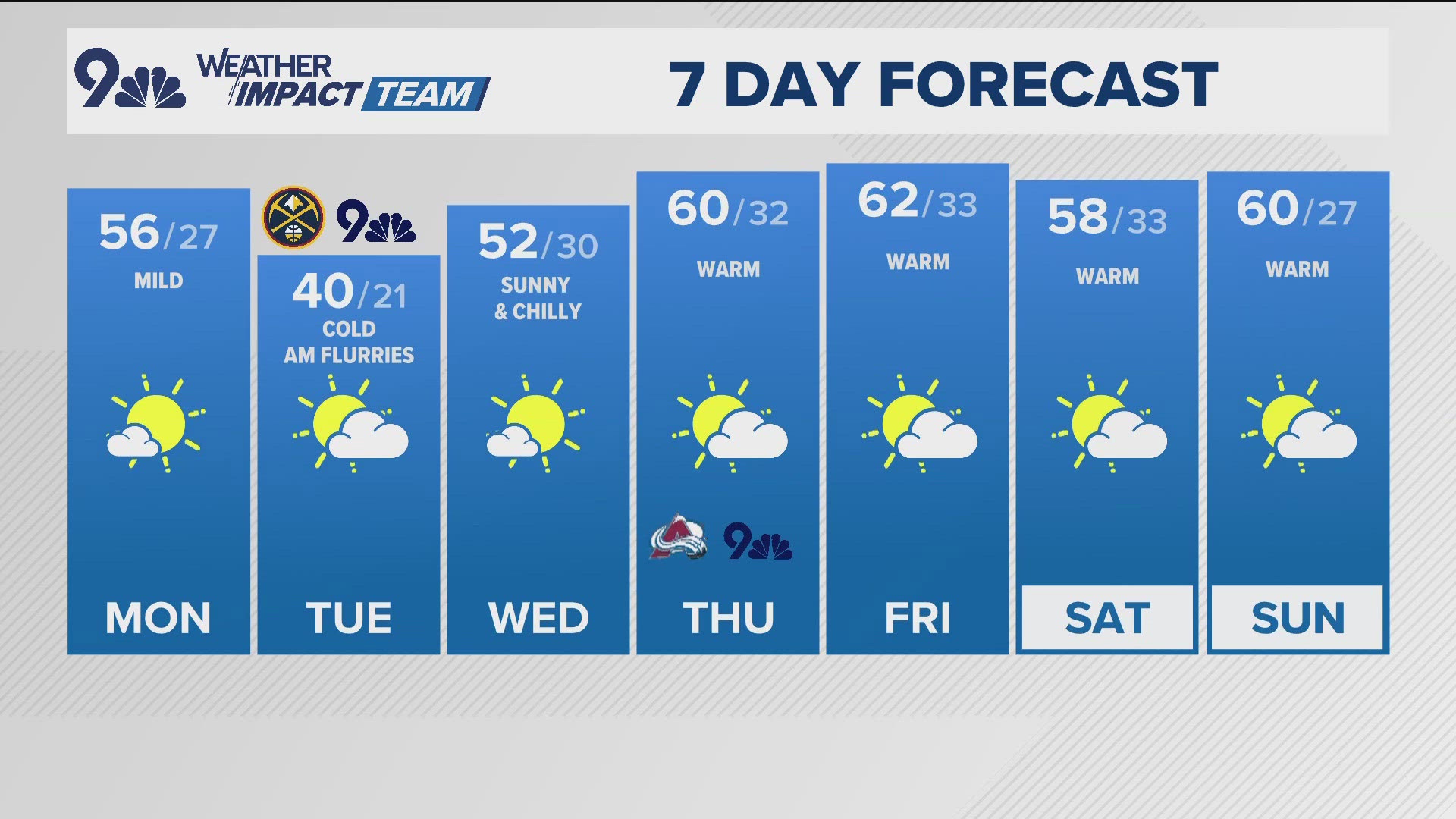KUSA — KUSA – In these divisive times, there’s one thing that all of us experience: the weather. And as cheesy as it sounds, we’re all under the same sky, so perhaps it’s not a shock that a bunch of 9NEWS viewers had the same question about a unique cloud that blessed the Denver metro area on Wednesday afternoon.
Seriously though: through Your Take alone, we got 20 photos of a cool-looking cloud formation from a bunch of different people.
Viewer Julie Arnold wrote: “This cloud looks like a giant ocean wave!”

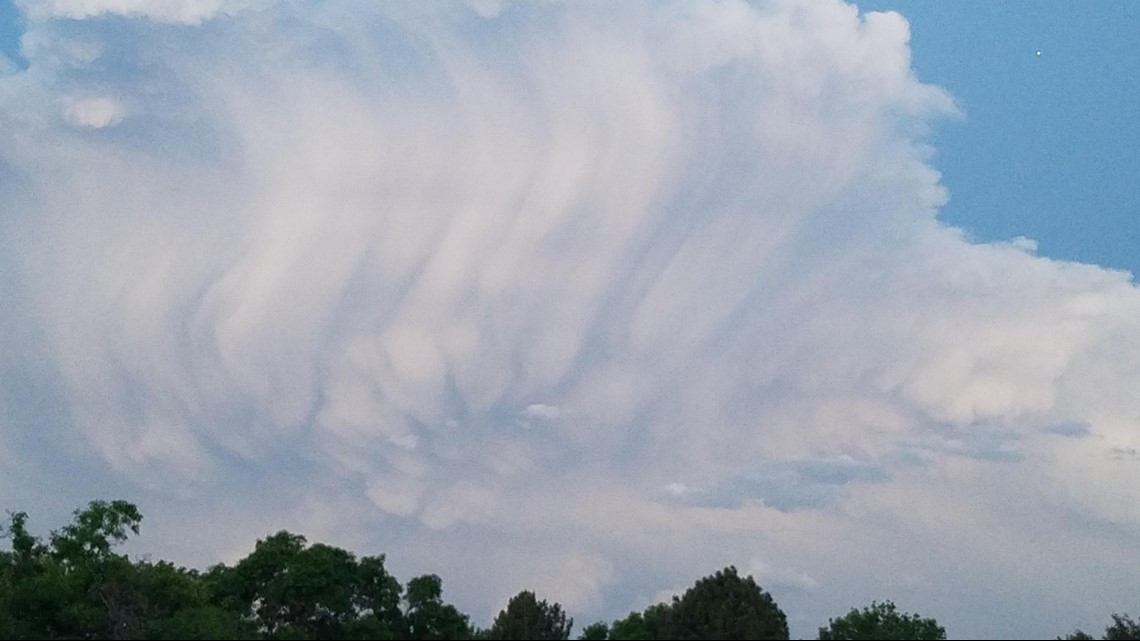
“This thunderstorm looks like a giant paintbrush in the sky!” viewers Grant and Christa Tomazin wrote.

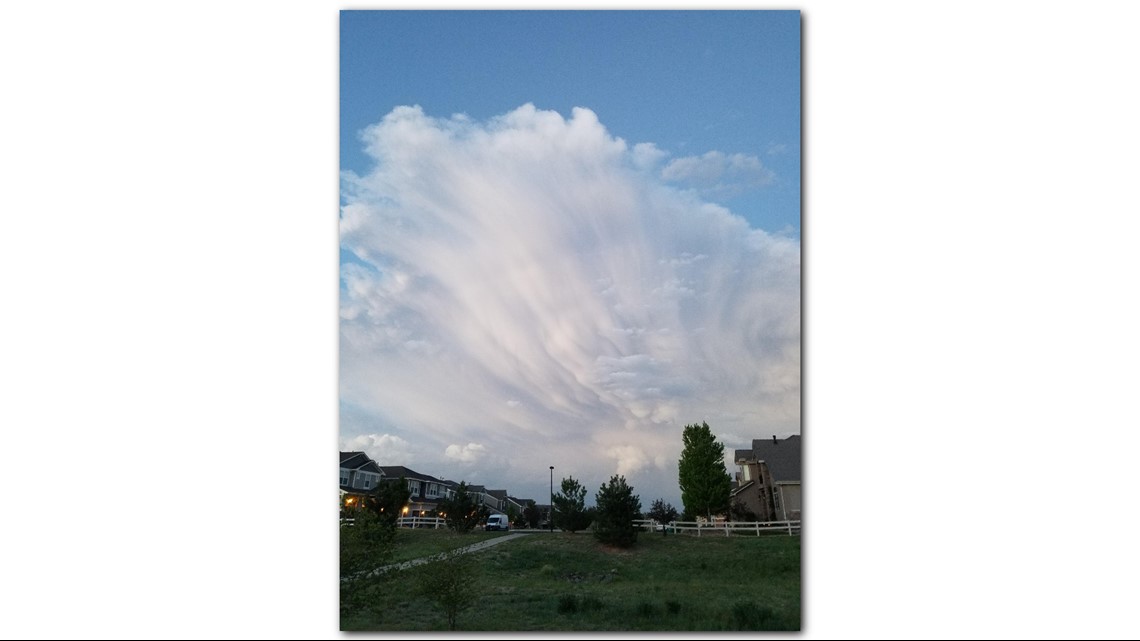
“These sure were some interesting cloud seen from Centennial tonight!” Kimberly Keeler wrote. “What kind of clouds are these, Kathy Sabine?”

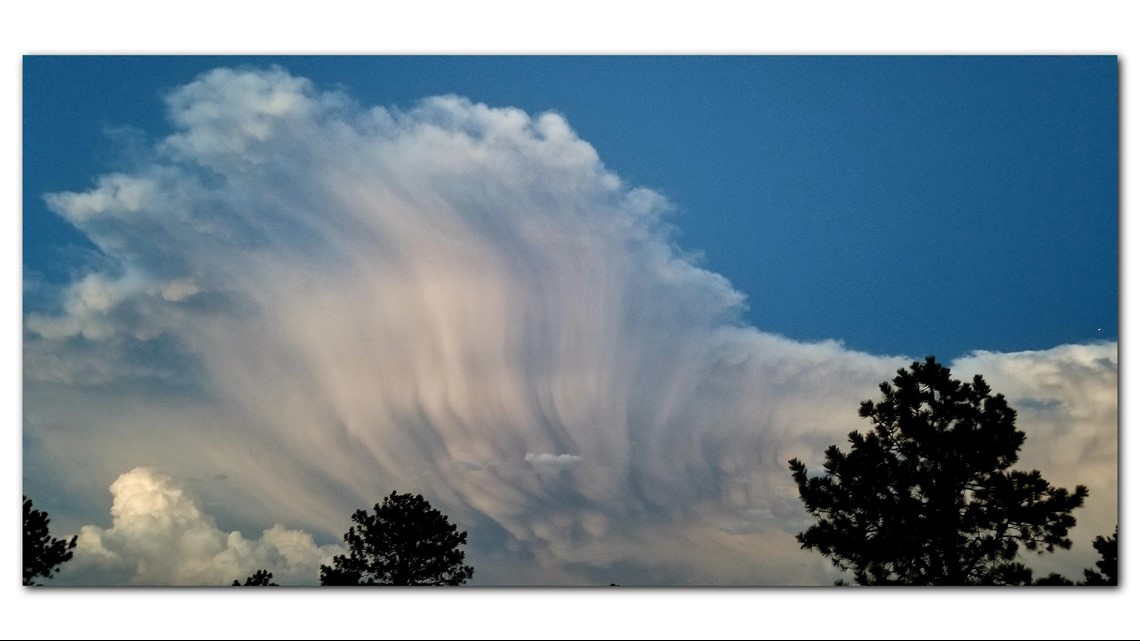
Well Kimberly, Kathy Sabine isn’t in the office yet, but 9NEWS Meteorologist (and go-to guy for 9NEWS.com cloud-related questions) Cory Reppenhagen was.
Here’s his explanation for this super cool cloud formation:
At 8 p.m. Wednesday, an outflow boundary from thunderstorms in northeast Colorado hit the Palmer Divide, and quickly sparked up a few new thunderstorms near Kiowa. These are thunderstorms that everyone was seeing from the Denver metro area. The fabulous wispy clouds in these photographs are of the part of the thunderstorm called the anvil. That is the upperpart of the storm mostly comprised of ice particles that spread out as the storm hits the tropopause or a layer of stable air. You can see that this storm created a very wispy appearance on the anvil. Those streaks are actually evaporating snow called virga, which falls out of the thunderstorm anvil and evaporates in the relatively dry air surrounding the upper part of the storm. You can also see below those streaks are some pillowy-looking clouds called mammatus. Both of these features are common on the backside of a decaying thunderstorm.
Check out more photos of these super cool clouds below. Have you also seen something cool? Upload your photos to yourtake.9news.com!
And you should probably also follow Cory Reppenhagen on Facebook if you're fascinated by clouds like this!


